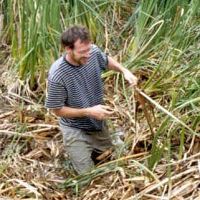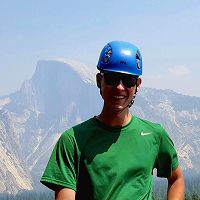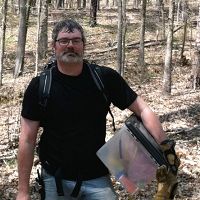Taylor et al., 2016
Comprehensive seismic surveys suggest that subsurface water-holding capacity is secondary to bedrock nutrient content as a regulator of vegetation productivity in the Sierra Nevada Batholith, California
Taylor, N.J.; Riebe, C.S.; Dueker, K.G.; Goulden, M.; Flinchum, B.A.; Pasquet, S.; Callahan, R.P.; Hahm, W.J.; Keifer, I.S.; Holbrook, W.S. (2016)
Fall Meeting, American Geophysical Union, December 2016. Abstract EP43C-0964.
-
Sierra, GRAD STUDENT
-
Sierra, INVESTIGATOR
-
Sierra, INVESTIGATOR
-
Sierra, COLLABORATOR, GRAD STUDENT
-
Sierra, GRAD STUDENT
-
Eel, INVESTIGATOR, COLLABORATOR
-
Boulder, Calhoun, Eel, Reynolds, Sierra, COLLABORATOR
Abstract
Both climate and lithology regulate the distribution of vegetation across Earth’s surface. However, lithologic effects on vegetation are inherently difficult to understand, because they integrate both the properties of bedrock and the processes that alter it in the critical zone. For example, bedrock composition can influence overlying vegetation by providing nutrients that promote growth. Likewise weathering, which may depend in part on bedrock composition, can promote growth by increasing subsurface porosity, which provides storage space for life-sustaining water. To disentangle the effects of bedrock on vegetation, we used seismology to quantify subsurface porosity in 3D, integrated from the surface to vegetation rooting depths, at three climatically similar but geologically diverse granitic sites in the Sierra Nevada, California. Evapotranspiration (ET) varies tenfold, allowing us to test the hypothesis that differences in ecosystem productivity are driven by lithologic differences in subsurface water storage capacity. We found that subsurface porosity varies by only 10 percent. Thus our results show little difference in weathering across the sites, despite sharp differences in the abundance of weatherable minerals such as biotite and hornblende. Moreover, porosity does not explain the large inferred variations in ET across our sites. However, ET does correlate strongly with bedrock concentrations of plant-essential nutrients including phosphorus, a correlation that is widespread across the Sierra Nevada Batholith based on our previous work. Together, our results suggest that, for a given climate, ecosystem productivity can depend predominantly on bedrock nutrient concentrations rather than weathering. Bedrock in the Sierra Nevada is similar to granites of other mountain ranges around the world, implying that our results have widespread implications for understanding lithologic effects on the distribution of life across Earth’s surface.
Citation
Taylor, N.J.; Riebe, C.S.; Dueker, K.G.; Goulden, M.; Flinchum, B.A.; Pasquet, S.; Callahan, R.P.; Hahm, W.J.; Keifer, I.S.; Holbrook, W.S. (2016): Comprehensive seismic surveys suggest that subsurface water-holding capacity is secondary to bedrock nutrient content as a regulator of vegetation productivity in the Sierra Nevada Batholith, California. Fall Meeting, American Geophysical Union, December 2016. Abstract EP43C-0964..
Explore Further







